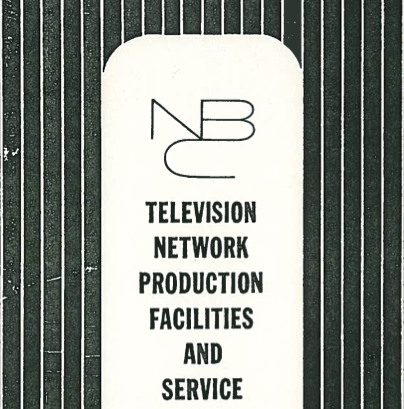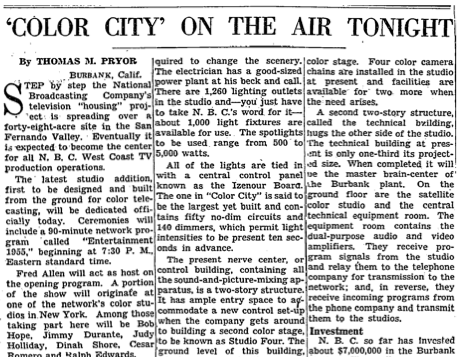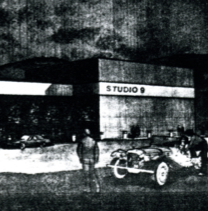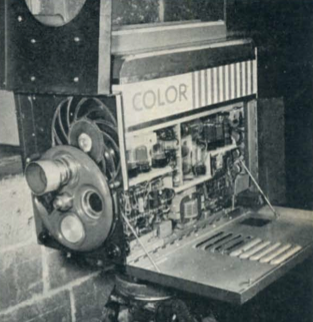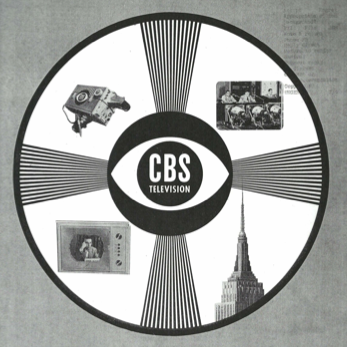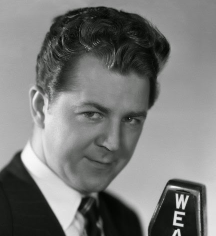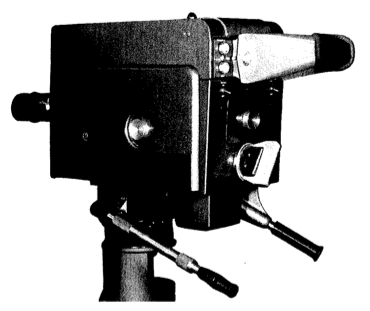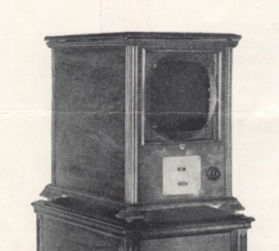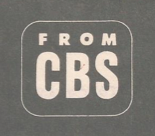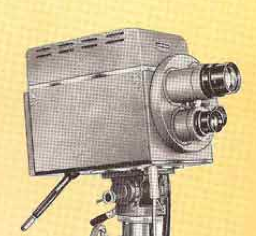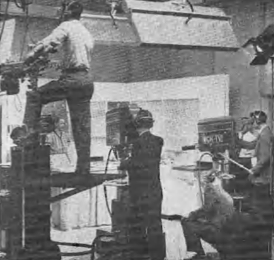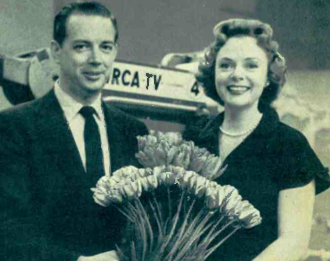NBC’s Radio City West, 1938
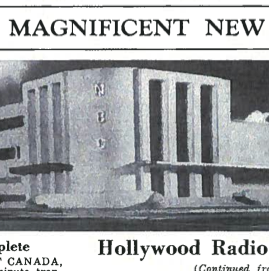
A selection of articles about the opening of NBC’s first purpose-built Hollywood facility, which it occupied until 1964.
1953: “This Is Color TV”
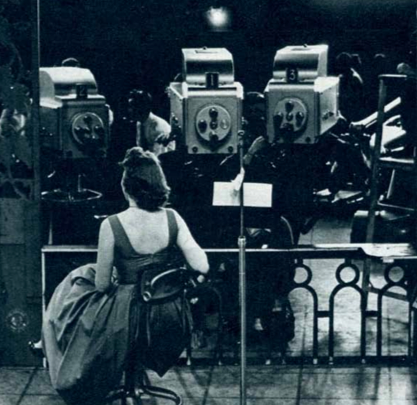
TV Guide takes a look at progress in color television technology, and on the last two pages, shows us rare images inside NBC’s first color facility…The Colonial Theater and the RCA TK40 prototype cameras.
Behind The Scenes With Eddie Brinkmann
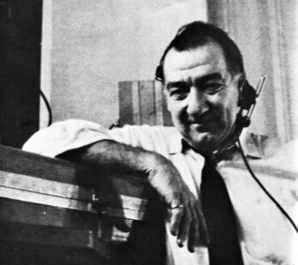
Ed Sullivan stage manager Eddie Brinkmann gives a glimpse of what you didn’t see on camera. He was the Stage Manager for Ed Sullivan from Day 1, till the end, and worked on many of the biggest CBS shows of the era.
April 14, 1956…The Videotape Revolution Begins; VR-1000 Debuts
This prototype Ampex VTR called “Mark IV” started a whole new era in television. Taken at the National Association of Radio & Television Broadcasters show in Chicago, the crowd photo shows the first demonstration. When this group of CBS television affiliates saw remarks by CBS’s Bill Lodge miraculously replayed moments later, everything changed! This day, a STAR was born!
Even at $50,000 per machine, the week of the demonstration, Ampex took almost 100 orders for the VR-1000 and all that got you was a space on the waiting list. Fred Pfost, one of the Ampex video tape development team members describes the scene that day.
“On the Saturday, April 14, two days before the convention started, we demonstrated the recorder for about 300 CBS affiliates meeting at the Conrad Hilton Hotel. I recorded (from behind a curtain) the opening speech of Bill Lodge, V.P. of CBS, who described all the activities that CBS had been involved in during the past year, and his announcement of a big surprise, that was about to happen. After I rewound the tape and pushed the play button for this group of executives, they saw the instantaneous replay of the speech.”
“There were about ten seconds of total silence, until they suddenly realized just what they were seeing on the twenty video monitors located around the room. Pandemonium broke out with wild clapping and cheering for five full minutes. This was the first time in history that a large group (outside of Ampex) had ever seen a high quality, instantaneous replay of any event. The experience still brings tears to my eyes when I recall this event.”
“During the week of the convention, the Ampex display area was packed, all day, every day. Orders came so fast and furious, that the Ampex sales staff was writing orders on cocktail napkins.”
It took Ampex a year to fill just the orders taken at the convention. If memory serves me right, CBS got the first 5, NBC got the second 5 and ABC, the third 5, with more on order for all 3 networks. I think CBS put 3 at TVC, and had 2 in NYC. NBC put 3 at Burbank, 1 in NYC and 1 went to RCA Labs in Princeton, with RCA and Ampex starting to share RCA’s color tape ability. I think ABC put 3 at Prospect and 2 in NYC.
Happy Anniversary Videotape! – Bobby Ellerbee
TeleTales #266…TV Golf In The 1950s
TeleTales #266…TV Golf In The 1950s
With The Master’s fresh on our minds, here is a look at how CBS covered a match in Palm Springs in 1956…with very long lenses.
This is an extended Zoomar Field Lens on an RCA TK11/31. The studio version was the TK11, and the field version was the TK31; the only real difference between the two control chains is that the field version’s power supply required less voltage. The camera heads were the same.
Notice the operator is using a rod through the camera for zoom and focus. For zoom in close, you pushed the rod in, and pulled it out for a zoom out to a wide shot. For focus, you turned the rod left or right. Many of the pro cameramen carried their zoom rod with them in a hard case, because working with a bent rod (no pun intended) made the zoom and focus jumpy and ragged.
The camera is mounted on one of the coolest mobile peds ever, the Baughman Spider pedestal. -Bobby Ellerbee
The History Of Video Tape Development By The Man Who Did It!
Melvin Sater’s 18 page account of those early days of developing the first commercially available line of video tape, at 3M.
Above is Melvin Sater’s 18 page account of those early days of developing the first commercially available line of video tape, at 3M. Most of this amazing read has to do with the 1956 and ’57 period, but also takes us into the mid ’60s and color tape. (Above, Sater with Jonathan Winters and the EMMY Sater won).
Those first rolls of 3M tape used for the April ’56 NAB demonstration could only give 15 to 25 playbacks, but in order to switch from kinescopes to videotape that next summer, the networks needed something that would give them at least 65 to 100 playbacks.
By the April 12, 1957 CBS tests, they were elated that they were able to get up to 390 replays before the tape broke down, but there were more hurdles to overcome. The 3M plant was working literally around the clock to produce enough tape for the summer of ’57 introduction, but 97% of the initial runs had to be scrapped and the manufacturing process modified.
By the way…they were flying blind on this! Ampex had not been able to get them a VTR to use in testing, so this was all theory and trial and error.
The top photo of Mel Sater and Johnathan Winters, show him with the EMMY that was presented to Sater for his work in videotape development, and Johnathan was a part of that.
The first use of videotape in a network show was a three minute black and white insert into “The Johnathan Winters Show” by NBC in 1957. The prerecorded song by Dorothy Collins was inserted without fanfare to see if the viewing audience would notice it. They didn’t.
History buffs will want to save this link and share it with their friends as this is the only place to find this on the web. Our thanks again to Neil Gjere for sharing this. -Bobby Ellerbee
